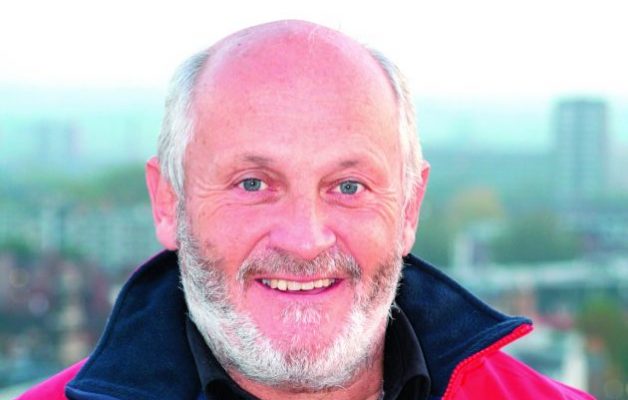Sailors are being sought as extras for a blockbuster about Dunkirk, but spare a thought for those who did not return, says Dick Durham
From my bedroom window I can see a small stone memorial in the corner of an ancient churchyard overlooking the Thames Estuary; on it are the names of four fisherman killed while returning from the beaches of Dunkirk.
In May scores of sailors are heading across the English Channel for the beaches of Malo les Bains, in the hope that they may be included in a Hollywood epic about the World War II evacuation of 338, 226 Belgian,
British and French soldiers from the beaches in June 1940. Not many of them will be aware of the memorial in St Clements churchyard as they sail past.
76 years ago, after the German Panzer units swept the British Expeditionary Force into a pocket around the Channel ports, more than 800 ‘little ships’ including Thames sailing barges, gaff-rigged fishing smacks, yachts, motor-boats and lifeboats, were pressed into service to rescue the armies in retreat. The amateur ‘navy’ of vessels lifted soldiers from the shallow beaches and carried them out to awaiting warships; others ferried them directly back across the Channel to Ramsgate and Dover.
Now another flotilla of little ships and sailors is heading to the French coast to act as ‘extras’ in the latest project of film director Christopher Nolan, of The Dark Knight, Batman Begins and Interstellar fame. Earlier in the year, at Nolan’s request, Ian Gilbert, commodore of the Association of Dunkirk Little Ships, invited members to take part in some pre-production filming and also asked for a list of members who are taking their boats across to join actors Tom Hardy, Mark Rylance and Kenneth Branagh.
‘There are issues surrounding insurance and costs that will of course need to be resolved. However we are simply trying to get an idea of how many Little Ships might be available to support the production,’ said Gilbert.
Of the small ports heavily involved with Operation Dynamo was my home, Leigh-on- Sea in Essex. From this Domesday Book town went a flotilla of six gaff cutters, used to rake the cockles from the Maplin Sands, their shoal draught hulls ideal to glide in over the shallow French beaches to collect Tommies. They were Defender, Letitia, Renown, Reliance, Resolute and Endeavour.
After getting east of Margate Roads they were attacked by enemy aircraft and they scattered. The air attack was seen off by Spitfires, which downed five Luftwaffe aircraft and they continuedacrossthe Dover Strait.
At the beaches the swell was too high for the fishing craft to pick the soldiers up from the sand so they instead embarked troops from the Royal Worcestershire Regiment and Cameron Highlanders from Dunkirk Harbour mole and transshipped them to deeper craft further offshore.
After two days ferrying men to the ships, two of the boats were out of action; Renown had broken down and Letitia had a shattered rudder. So both the wooden-hulled Leigh boats were taken in tow by the steel-hulled drifter Ben and Lucy. Just 30 minutes later a German-laid mine blew Renown to smithereens.
Her sister ship, Endeavour, has been restored and now has a fore and aft mooring in Leigh Creek, just a cockle shell toss from Renown’s old berth. She will be joining the flotilla in Dunkirk where filming starts on the 23 May.
Leigh maybe only a hamlet which can float hulls for just two hours either side of HW, but she has a seafaring past which is impressive.
The mini-port has nurtured two Masters of Trinity House, two Royal Naval Admirals, and shipwrights for the Mayflower.
All these men died in their beds, but as the lights go down in the Odeon and you grapple with your popcorn, spare a thought for Frank Osborne, Leslie Osborne, Harry Noakes and Harold Porter, who did not.
Dick Durham




